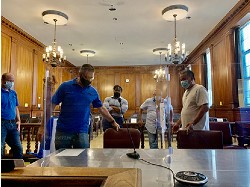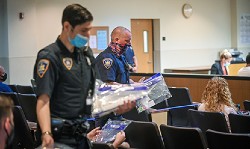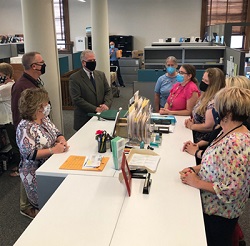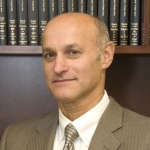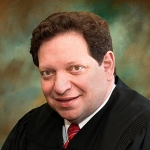THE COURTS NEVER CLOSED
In early March 2020, New York State became the epicenter of the COVID-19 pandemic. The issuance of mandatory stay-at-home orders and other restrictions on public gatherings significantly affected court operations and the delivery of justice. Notwithstanding the widespread disruption caused by the arrival of COVID-19, the New York State courts continued to deliver justice at all times. This is the story of how court leaders and staff found safe and efficient ways to keep the courts open and functioning in order to meet the demand for its services in the midst of a historic pandemic.
Under the strong leadership of Chief Judge Janet DiFiore and Chief Administrative Judge Lawrence K. Marks, and working with a dedicated and resourceful team of Administrative Judges and technology professionals, the New York State courts quickly established a virtual court model that was capable of hearing emergency and essential court matters. This model was swiftly expanded by early April to enable judges and court staff to hear a broad range of matters and ensure that the court system was able to safely and efficiently meet the broadest possible demand for its services.
The rapid conversion of our massive, sprawling court system, which features over 300 courthouses, 15,000 nonjudicial personnel and 1,200 state-paid judges, from an in-person operating model to an online platform is a remarkable story. To tell that story, we have compiled numerous interviews with key court administrators, including the Chief Judge, Chief Administrative Judge, Presiding Justices of the Appellate Division, Deputy Chief Administrative Judges, and other Administrative Judges throughout the court system. These individuals have described for us the sequence of events that followed the arrival of COVID-19, the many operational challenges they faced, and the creative responses and solutions that were implemented to keep the courts open and accessible to the public during the public health crisis.
Included in this archive are nearly 40 interviews with judges and court personnel, including court clerks and court officers who deal directly with the public on the front lines. The interviews serve as a contemporaneous record of what they experienced, and how they responded to an unprecedented event in the history of our court system. The archive focuses primarily on the work of our trial courts, each with their unique day-to-day operations, and focuses on how the judges and staff managed to carry out their mission of serving the justice needs of their litigants—many in dire need of housing, domestic abuse protection, estate administration upon the death of loved ones and so much more.
This program is a partnership of the Historical Society of the New York Courts and the NYS Unified Court System.
Marilyn Marcus, Executive Director
September 8, 2021
Listen to the Launch Podcast
We’re living through unprecedented times, and I can imagine no more important mission for us than to make a record of the court’s experiences as we navigate what I can only call these uncharted waters.
Marilyn Marcus, Executive Director
This podcast with Executive Director Marilyn Marcus contains deeper insight into the project. The individual recordings form an important archive of the courts’ experiences during these historic times, creating a cumulative and definitive record for future generations.


